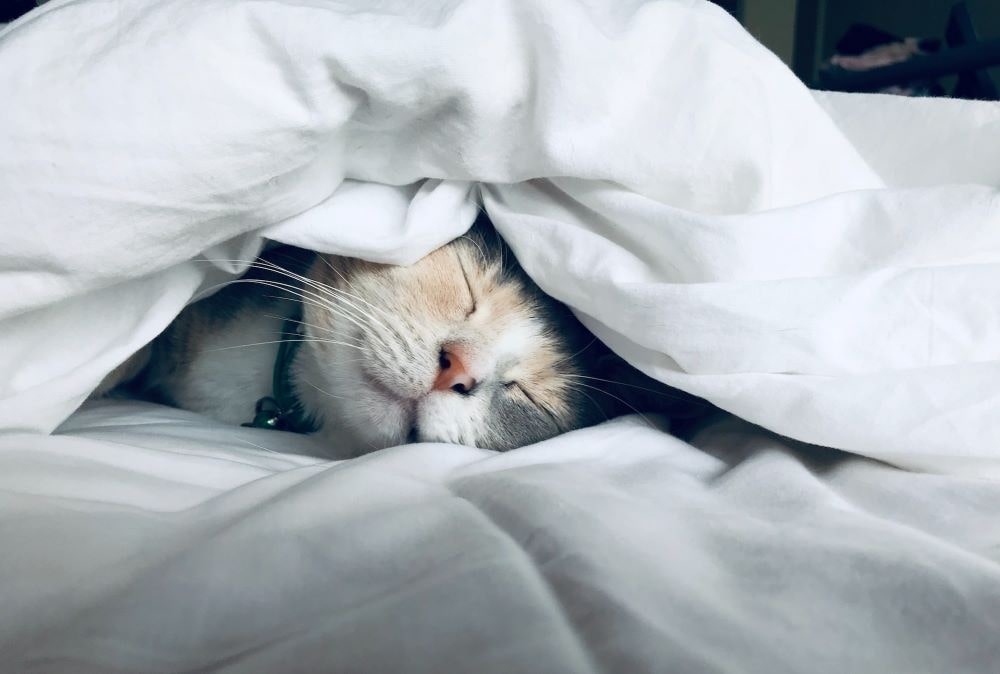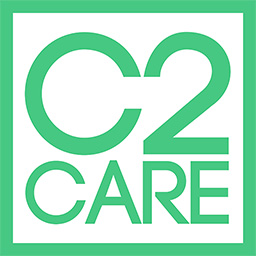DO YOU HAVE A GOOD RELATIONSHIP WITH SLEEP?
Sleep is one of the most important needs of the human body. It allows the body to repair itself and to ensure the proper functioning of cognitive abilities. But this natural mechanism can easily go wrong, especially with our modern lifestyle. If you are often tired, or dread bedtime, it may be time to take stock.

1. How does sleep work?
Sleep is a state of loss of consciousness without loss of sensory ability that occurs recurrently and cyclically. This state belongs to the circadian rhythm, which is the set of cyclical processes of the body that take place over approximately one day.
Sleep occurs through two processes: homeostasis and the circadian cycle.
The first is a process of balance and return to a state of equilibrium of the body. During the day, the body accumulates fatigue, certain molecules accumulate in the brain and participate in the perception of this state. Sleep allows the body to eliminate and cleanse itself of these substances, as well as to proceed with the repair of the body (at the muscular and cerebral level, among others).
The circadian cycle then, makes that the production of melatonin and the stop of the secretion of histamine (which maintains the awakening) occur, by calming itself on external factors signifying the alternation of the day and the night, as the luminosity for example.
When the body enters the sleep phase, and until it wakes up, it goes through several stages, or phases, of sleep, which are repeated cyclically throughout the night. The first is drowsiness, which is the stage of falling asleep. There is a reduction in alertness, heart rate and body temperature. Next comes light sleep, with very low alertness but still high sensitivity to external stimuli. This phase represents about half of the sleep time. This phase is followed by deep sleep, which is crucial in the process of cell division (and therefore of body repair and growth in children). Finally comes REM sleep, the phase most conducive to dreams, with a brain activity closest to wakefulness of all the sleep phases.
These phases follow each other in a cyclical manner during sleep, sometimes interspersed with natural micro-awakenings.
2. How is sleep disturbed?
Several factors can induce a disturbance of sleep, both in terms of its quantity, its quality and the ease with which it is achieved.
One of the first factors is artificial light. As mentioned earlier, the circadian rhythm is mainly regulated by light during the day and the absence of light at night. The presence of artificial light delays the onset of drowsiness and therefore sleep onset, which leads to shorter sleep times because the wake-up time is often fixed in our modern way of life.
Screens, in particular, play an important role in this disturbance, by the light they emit, but also by their content which can provoke an emotional reaction that decreases the quality of sleep.
Diet and consumption also play an important role in sleep. A fatty diet decreases the quality of sleep, and stimulants (such as tobacco or coffee) increase the difficulty of falling asleep. Sedatives and hypnotics (whether sleeping pills or free substances such as alcohol) make it easier to fall asleep but decrease sleep quality, with a long-term impact on health when taken repeatedly.
Sleep, although physiologically regulated, has a large behavioral component in its proper functioning. Bad behaviors at bedtime and in case of difficulties in falling asleep can facilitate the appearance of sleep disorders.
Most physical and mental pathologies, if prolonged over time, can impact sleep and lead to chronic disorders. We can mention, for example, chronic pain, sleep apnea, stress, depression or bipolar disorder. Post-traumatic stress can also greatly impact sleep quality and lead to disorders such as chronic nightmares or night terrors.
3. What are the main sleep disorders
Sleep disorders are divided into two categories: parasomnias, which are signs and symptoms that accompany or occur in parallel with sleep, and dyssomnias, which alter the quality or quantity of sleep.
Parasomnias
The main parasomnias are:
- Sleepwalking, that is, movements and wanderings that resemble those that can occur in a waking state, despite an obvious state of sleep.
- Night terrors are a disorder that affects mostly children. It consists of a seizure at the beginning of the night, during which the person seems to be in a state of panic and distress for a few minutes, sometimes accompanied by shouting and incoherent speech. The person calms down spontaneously, external interventions are useless, and has no memory of the crisis. It is the repetition and impact of these seizures on life that defines the disorder.
- Sleep paralysis, which is a conflict between waking and sleeping states that are not incompatible at the nervous system level. This confusion results in an impossibility of movement (paralysis), a sensation of crushing or suffocation and a feeling of intense panic, without the possibility of screaming or struggling. Contrary to night terrors, the patient keeps the memory of it.
- Chronic nightmares, the repetition of nightmares, often the same or similar, which cause a decrease in the quality of sleep or even repeated awakenings.
Dyssomnias
There are three main categories of dyssomnia:
- Insomnia, which is a decrease in sleep time with a significant impact on life. Insomnia is a combination of several of the following symptoms: difficulty falling asleep, difficulty staying asleep, waking up early, and unrefreshing sleep.
- Hypersomnias, characterized by more than average sleep and frequent daytime sleepiness or dozing that has a significant impact on functioning.
- Circadian rhythm disorders, which are a mismatch between the sleep-wake rhythm and what is socially expected. Sleep can come too early (early rhythm), too late (late rhythm) or irregularly (the circadian rhythm does not align properly with external time cues, such as light).
4. How to solve sleep disorders?
When sleep disturbances are caused by an external cause, removing it should be the first intention. When the disorder is not yet chronic, this is often enough to make the problem disappear. Unfortunately, sleep disorders are often prone to chronicity, and other techniques can be used.
Drug treatment
Medication can be a good first line of treatment for many sleep disorders. It allows to regain a certain amount of sleep as well as comfort when falling asleep. However, sleeping pills and hypnotics often have undesirable long-term side effects, ranging from addiction to cardio-vascular risks. Some medications allow a good sleep but alter the sleep phases, which can decrease the quality of sleep.
Herbal medicine
The use of certain plants can facilitate falling asleep and improve sleep. Chamomile, linden or passion flower are often used in infusions to be drunk before bedtime to induce drowsiness. These soft solutions can help with certain problems, but they are often insufficient for more severe disorders.
Improving sleep hygiene
Sleep hygiene includes all behaviors related to bedtime and sleep. Bedtime, the rituals set up before going to sleep, the temperature of the room, the length of the night, are all factors that play an important role in regulating sleep.
Improving these behaviors can often improve, at least in part, sleep-related difficulties.
Cognitive and behavioral therapy
When sleep disorders become chronic, they are often maintained by limiting thoughts and inappropriate behaviors. Cognitive and behavioral therapies (CBT) allow to modify these thoughts and behaviors, and to change the relationship with sleep towards a more favorable situation. It is a solution that requires more effort, as it involves confronting one’s thoughts and emotions as well as changing behaviors that may have been present for a long time. These therapies remain one of the most effective long-term solutions for treating certain sleep disorders.

